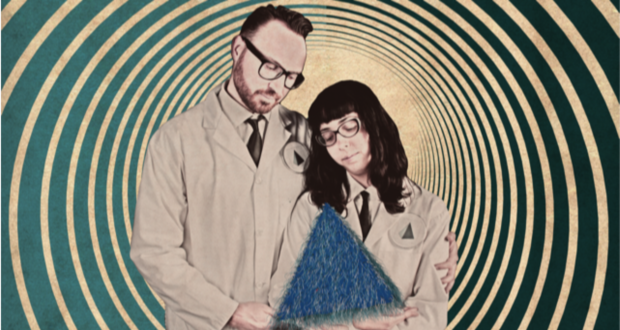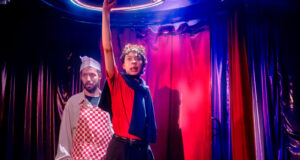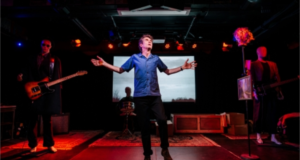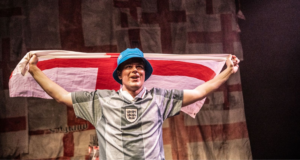Assembly Checkpoint – Assembly Checkpoint
Blindfolded audiences are immersed into the dystopian world of Ray Bradbury’s homonymous sci-fi short story.Summary
Rating
Good
When in 1948 Ray Bradbury wrote the sci-fi short story The Shape of Things (which later became Tomorrow’s Child) he chose to set it forty years in the future, which at the time would have been 1988. Ironically, the fictional date is now almost another forty years in the past, revealing an interesting perspective into the way diversity is seen in the span of almost a century.
Upon arrival at Assembly Checkpoint, we are handed a blindfold, whilst a person with a clipboard and a white lab coat gives us a briefing. This is intended to both share instructions about the performance and set some context for the narrative. The speech, however, isn’t particularly convincing and begs the question of whether they believe in their world as much as we are expected to.
Once blindfolded, we are taken behind a black curtain and helped to sit on chairs. The ambient noise, deliberately loud, is that of a playground heaving with children. The arrival of a helicopter marks the beginning of the story, in which we are flies on the wall during the delivery of a couple’s first child. Excited and nervous, we follow them into the hospital, where a glitch in the high-tech birthing machine causes the baby to become trapped in an alternative dimension and appear to the human eye (spoiler alert!) as a blue pyramid with tentacles. It’s a well-devised scene and our imagination can confidently reproduce the physical aspect of the newborn – so much so that the visual reveal at the end of the performance feels redundant.
It’s hard to say whether Bradbury wanted this dystopian drama to highlight issues of appearance-based discrimination and promote an open mind towards diversity. For certain, he wanted to suggest that in order to find happiness, one has to make some sacrifices.
With other shows at this festival using articulate binaural recordings to produce stunning immersive experiences, a more simplified soundscape built with speakers dotted around the audience is somewhat naïve. Surely, this wasn’t the case when the show premiered in Calgari back in 2014, but in the last ten years audio design has progressed quite fast – Darkfield being an example above all – leaving productions like this a little behind.
Despite not standing out for their pioneering technology, Canadian company Ghost River Theatre make good use of a more traditional setup, creating an intriguing acoustic landscape and a treat for sci-fi lovers. While not much into the genre myself, I do however have a soft spot for anything that excludes any visual content, that makes us rely on the imaginative potential of sound alone. Sci-fi enthusiast or not, I thoroughly enjoyed this singular sensory journey.
Adapted by: Matthew Waddell, Eric Rose and David van Belle
Directed by: Eric Rose and Matthew Waddell
Developed and Produced by: Ghost River Theatre
Tomorrow’s Child plays at EdFringe 2023 until 28 August, 11:40am at Assembly Checkpoint. Further information and bookings here.
 Everything Theatre Reviews, interviews and news for theatre lovers, London and beyond
Everything Theatre Reviews, interviews and news for theatre lovers, London and beyond



